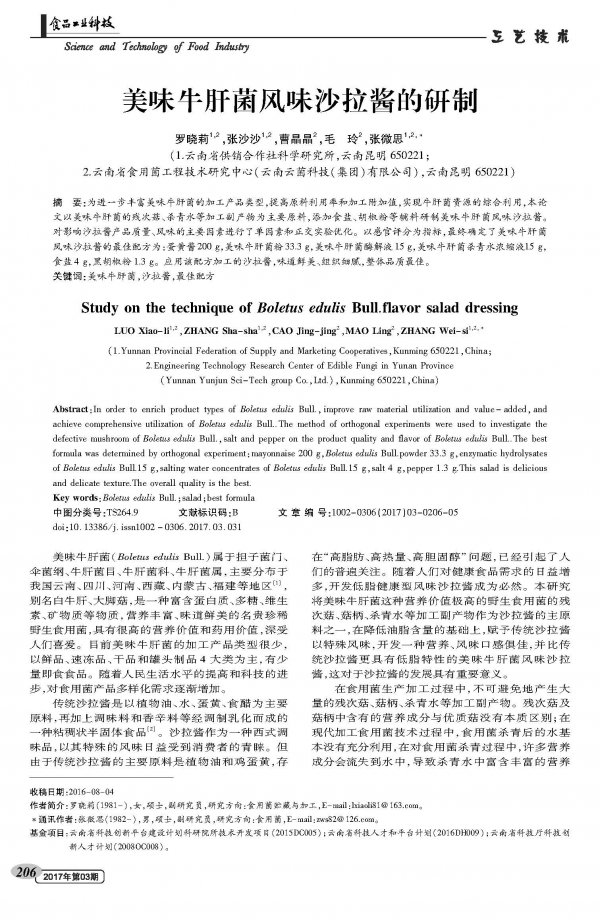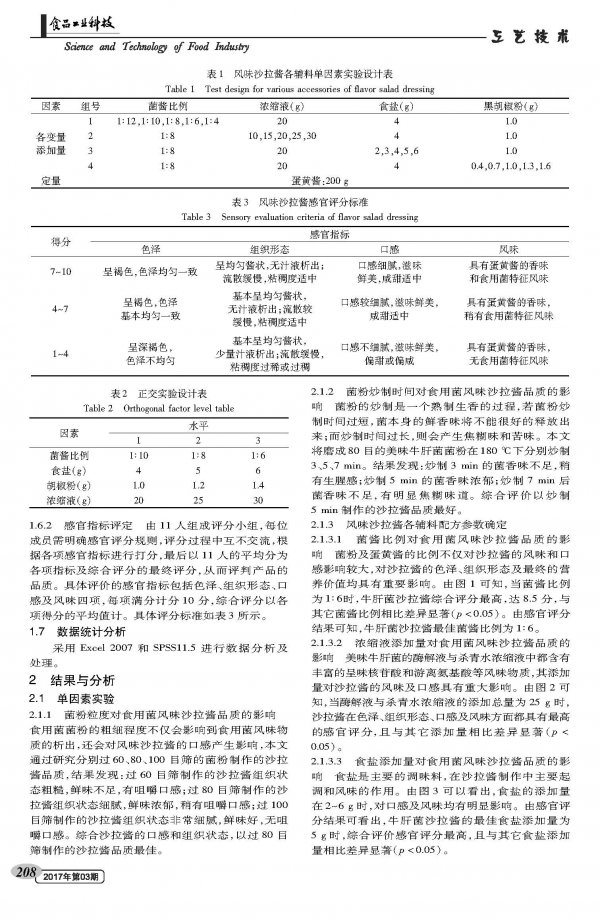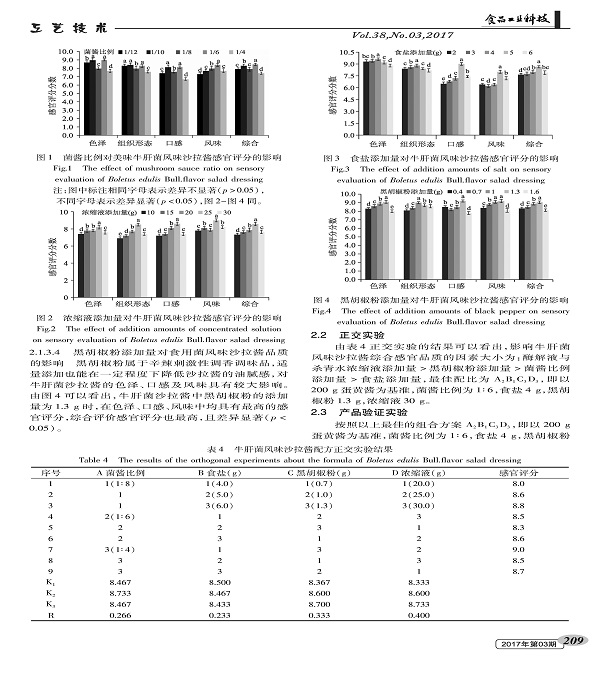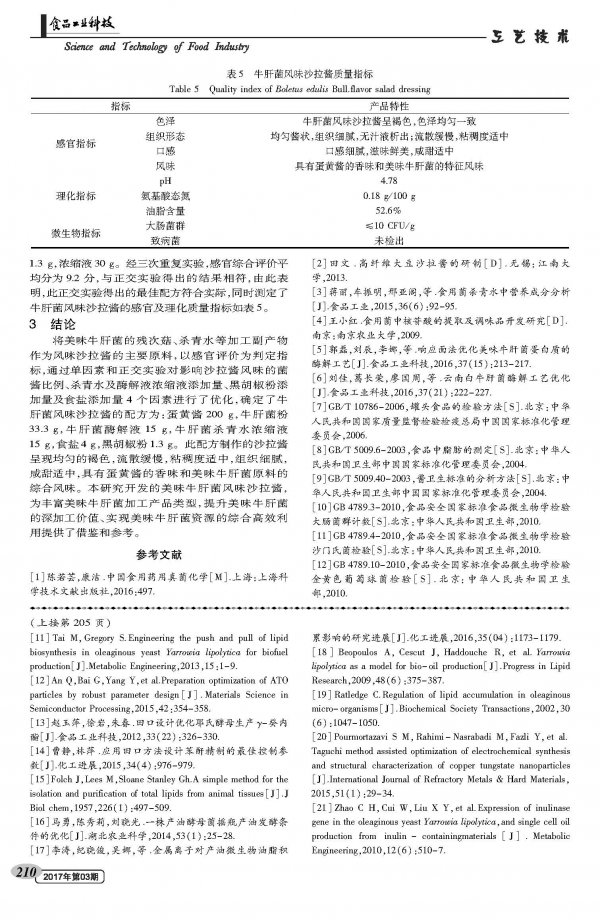Boletus edulis belongs to the genus Basidiomycetes, Agaricaceae, Boletus, Boletus, Boletus, mainly distributed in Yunnan, Sichuan, Henan, Tibet, Inner Mongolia, Fujian, etc. Bigfoot mushroom is a rare and rare wild edible fungus rich in protein, polysaccharides, vitamins, minerals, etc. It is rich in nutrients and delicious in taste. It has high nutritional value and medicinal value and is very popular among people. At present, there are few types of processed boletus edulis, mainly fresh, quick-frozen, dry and canned products, and a small amount of ready-to-eat food. With the improvement of people's living standards and the advancement of science and technology, the diversified demand for edible fungi products has gradually increased. The traditional salad dressing is a viscous semi-solid food prepared by emulsification of vegetable oil, water, egg yolk and vinegar as main raw materials, together with seasonings and spices. As a Western-style condiment, salad dressing is increasingly favored by consumers with its special flavor. However, because the main raw materials of traditional salad dressings are vegetable oil and egg yolk, the problem of "high fat, high calorie, high cholesterol" has caused widespread concern. With the increasing demand for healthy foods, it is inevitable to develop low-fat and healthy flavored salad dressings. In this study, the processing of by-products such as porcini mushrooms, such as residual mushroom, mushroom stalk, and sapling water, which are extremely high in nutritional value, is one of the main raw materials of salad dressing. With a special flavor, salad dressing develops a delicious boletus-flavored salad dressing with a nutritious taste and a low-fat character compared to traditional salad dressing, which is important for the development of salad dressing. In the process of production and processing of edible fungi, a large number of processing by-products such as residual mushroom, mushroom stem and water-killing water are inevitably produced. The nutrients contained in the residual mushroom and the mushroom handle are not substantially different from the high-quality mushrooms. In the process of modern processing of edible fungi, the water after the edible fungi is basically not fully utilized. In the process of killing the edible fungus, many nutrients will be Loss into the water, resulting in rich nutrients in the water, while enzymatic hydrolysis of the edible fungus extract can significantly increase the content of taste amino acids and nucleotides in the solution, so that the scent of the extract is significant Enhanced. Guo Lei et al. found that the hydrolysate obtained by enzymatic hydrolysis of Boletus edulis is rich in various nutrients and can be further processed into delicious boletus seasonings; Liu Jia et al. found that Yunnan white boletus (delicious cattle) The enzymatic hydrolysate of the liver is rich in flavor and unique in flavor, and can be used to produce high-quality flavorings. For the first time, this study carried out orthogonal experiments on the basis of single factor experiments with the processing of by-products such as porcini mushrooms, mushroom stalks, and sapling water, and the main raw materials of the enzymatic hydrolysate. The evaluation is an indicator to optimize the formulation of the delicious boletus flavored salad dressing, and finally develop a delicious boletus flavored salad dressing product, which not only enriches the added value of the delicious boletus product, but also improves the comprehensive boletus edulis. Utilization rate, reducing environmental pollution. 



